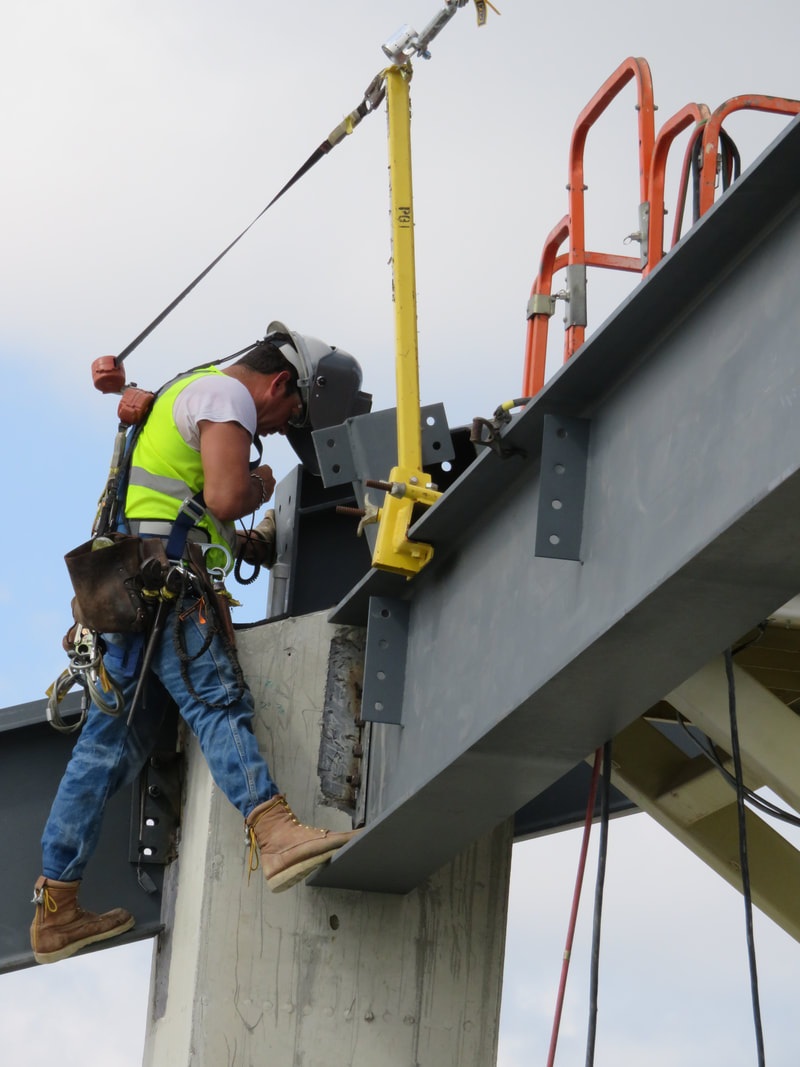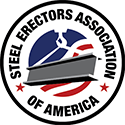While OSHA doesn’t address regulations and workplace standards for wearing tool belts, the agency states in their General Industry Standard that all materials, equipment, and tools which are not in use while aloft shall be secured against accidental displacement. In addition, the American National Standards Institute approved in July 2018 the publication of a new standard (ANSI/ISEA 121-2018) to address the need for dropped object prevention and tool tethering.
All three objectives—freedom of movement, prevention of falls, and prevention of dropped objects—is the goal when selecting the right tool belt for the job. BEST PRACTICES There are many different types of belts and bags available to hold tools and equipment. Many times, small tools may be hung on a frog, a small hook or locking snap link, attached to the belt. Bolt bags are made of leather or canvas and can attach either to the ironworker’s belt or be worn via long shoulder strap. Some bolt bags have tool loops on the side for carrying bull pins. To perform jobs effectively, ironworkers need a convenient and safe way to carry their tools. The following tools comprise the basic tool belt worn by ironworkers doing structural steel work: bolt bags, adjustable crescent spud wrenches, ¾” bull pins, bull-pin holder, ½” drive ratchet, ½” extension, 3-lb. hammer, 25-foot tape measure, sleever bar, soap stone and holder, and electrical tape. In general, as long as the tool belt doesn’t affect the operation of the lanyard, you can wear it safely. No rules prevent the wearing of a tool belt with your harness. A tool belt will keep a worker safer and more productive on the job. The waist or tool belt, while not considered a necessary component of the fall-arrest system, must be fitted properly. Position the D-rings at the hips, rather than in the front or rear. Avoid adjusting it in a way that could apply pressure to the kidneys or lower back. If the waist belt is not an integral part of the harness, it must not be worn on the outside of the harness. Always put the tool belt on first, then add the harness over it. This is also true of any added tool belts. Choose a tool belt which is designed for the dominant hand. Ensure flexibility for adding bolt bags and ease of tethering as needed. Wide band suspenders can help to disperse weight and ease the lower back. Finally, tool tethering is a reality in today’s work environment. Tools and tool belts are designed with tethering attachment points, making it easier and safer to secure tools. ANSI/ISEA 121-2018 establishes minimum design, performance/testing and labeling requirements for dropped object prevention solutions including tool and anchor attachments, tool tethers and containers that transport tools and equipment to and from at-heights work zones. According to a May 14, 2018 article published by Industrial Safety and Hygiene News, author states that the new standard will address:
RESOURCES Tools of the Trade Product Review Industrial Safety & Hygiene News OH&S Ergodyne Capital Safety This Safety Flash was contributed by Tim Eldridge, SEAA Craft Training Specialist and President, Education Services Unlimited, Charlotte, N.C., in cooperation with SEAA’s Safety Committee. It is designed to keep members informed about ongoing safety issues and to provide suggestions for reducing risk. Best practices are gathered from a variety of sources. They may be more or less stringent than individual corporate policies, and are not intended to be an official recommendation from SEAA. Always get approval and direction from your company officers on any new practice or procedure as these best practices may not work for all situations. Everyone benefits when a worker avoids injury. Submit your ideas for Safety Flash to [email protected]. Comments are closed.
|



 RSS Feed
RSS Feed
